Seagrasses, more closely related to lilies than true grasses, are distributed across Earth’s salty and brackish shallows from tropics to Arctic. There are 72 known species in four major groups.
Thick roots and rhizomes anchor these flowering plants against currents while simultaneously stabilizing sediments and shorelines.
Seagrass prairies improve and protect water quality, support complex food webs, and sequester more atmospheric carbon per acre and for longer than terrestrial forests. They’re being destroyed, mostly by human activity, at the rate of one football field every 30 minutes.
Virginia: A Bright Hope for Eelgrass Recovery
But there are flashes of hope, none brighter than seagrass recovery in Virginia.
In the early 1930s eelgrass, a temperate species, took a huge hit throughout the North Atlantic from what was presumably a non-human cause — wasting disease.
If significant eelgrass survived in Virginia’s coastal bays in 1933, a hurricane and bay scallop dredges likely did it in. Lush eelgrass prairies were suddenly replaced with shifting sands that blocked sunlight, filled in navigation channels and smothered oyster reefs.
Also dependent on eelgrass and declining with it were speckled trout, red drum, flounder, striped bass, American brant and bay scallops, all of which had pumped money into local economies. One gastropod, the eelgrass limpet, even went extinct.
By 1930 Virginia was harvesting more bay scallops than any other state, but two years later the fishery collapsed, and it hasn’t resumed.
“As kids we picked up bay-scallop shells on the beach and didn’t know what a live version looked like,” says Bo Lusk, Coastal Scientist for The Nature Conservancy’s 40,000-acre Virginia Coast Reserve, longest expanse of coastal wilderness in the East. “Chesapeake Bay was where the eelgrass was; you never expected it on the sea side.”
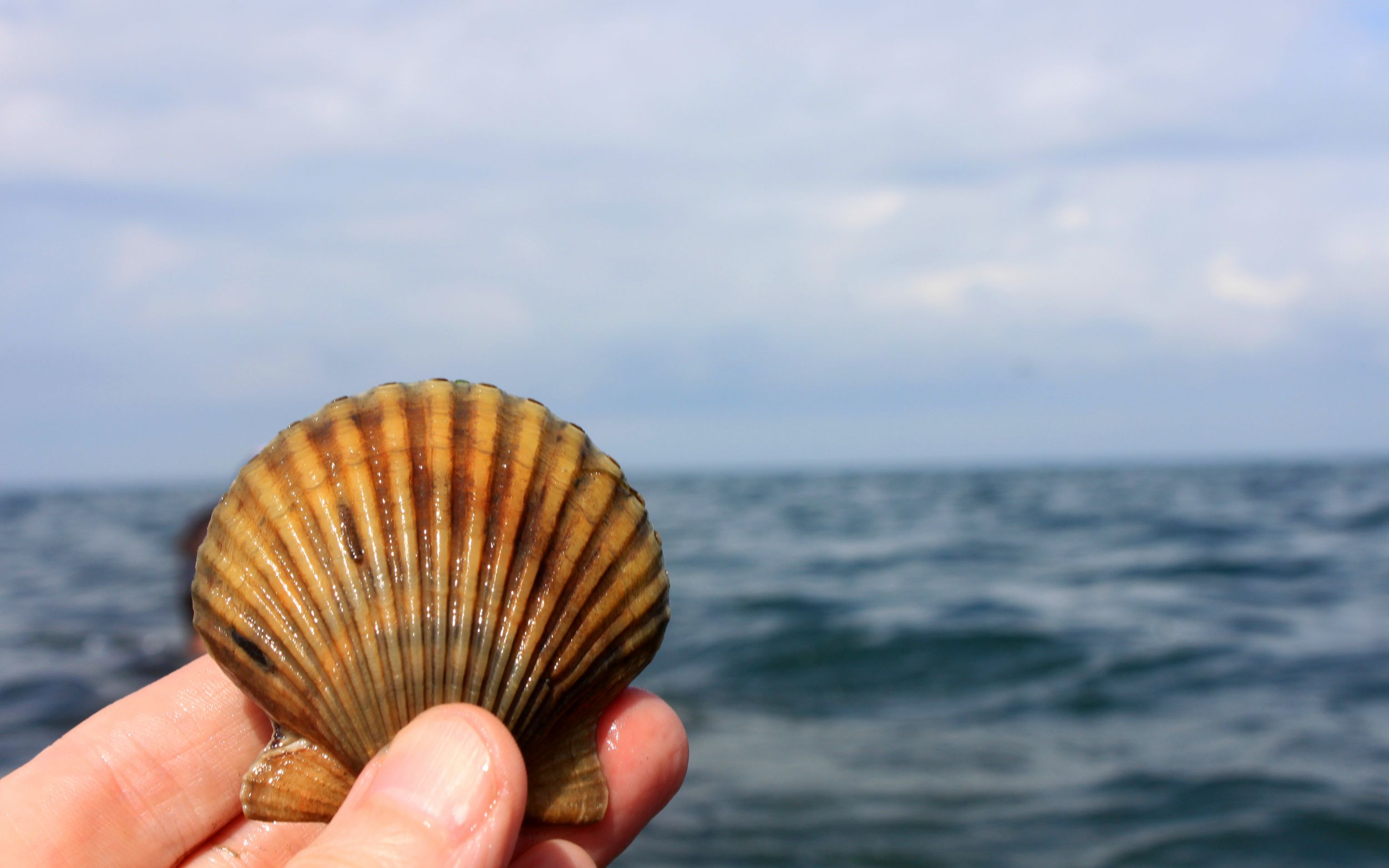
Then in 1997 Dr. Robert Orth of the Virginia Institute of Marine Science (VIMS), a researcher attempting eelgrass restoration, got a phone call from someone who thought he’d found eelgrass in South Bay, on the ocean side.
Orth and his team investigated and were stunned to confirm the report. So they planted small test plots in South Bay. When these prospered they sowed seeds across a large area, again with excellent results. The original seeds had to be collected from Chesapeake Bay where an influx of freshwater had provided eelgrass refuge from wasting disease.
In 2001, with financial help from NOAA, the state’s Fishing License Fund and the American Recovery and Reinvestment Act, they embarked on an annual, large-scale seeding program in bays to the north. The extent and speed of regrowth astonished them.
Now VIMS employs a mechanical harvester equipped with sheers that, in spring, cuts plants at the base (without killing them) and collects the flowered shoots in a bag. Seeds are separated and held in tanks at the Institute’s Gloucester Point lab until fall when seawater cools enough for them to germinate. Then they’re sown from boats over suitable bottom.
In 2006 VIMS entered into a partnership with The Nature Conservancy, which in May recruits as many as 60 volunteers to snorkel around Virginia Coast Reserve “donor beds,” picking ripened eelgrass by hand. Seeds are taken to the Conservancy’s holding tanks in the Town of Oyster and, as with the VIMS operation, sown in autumn.
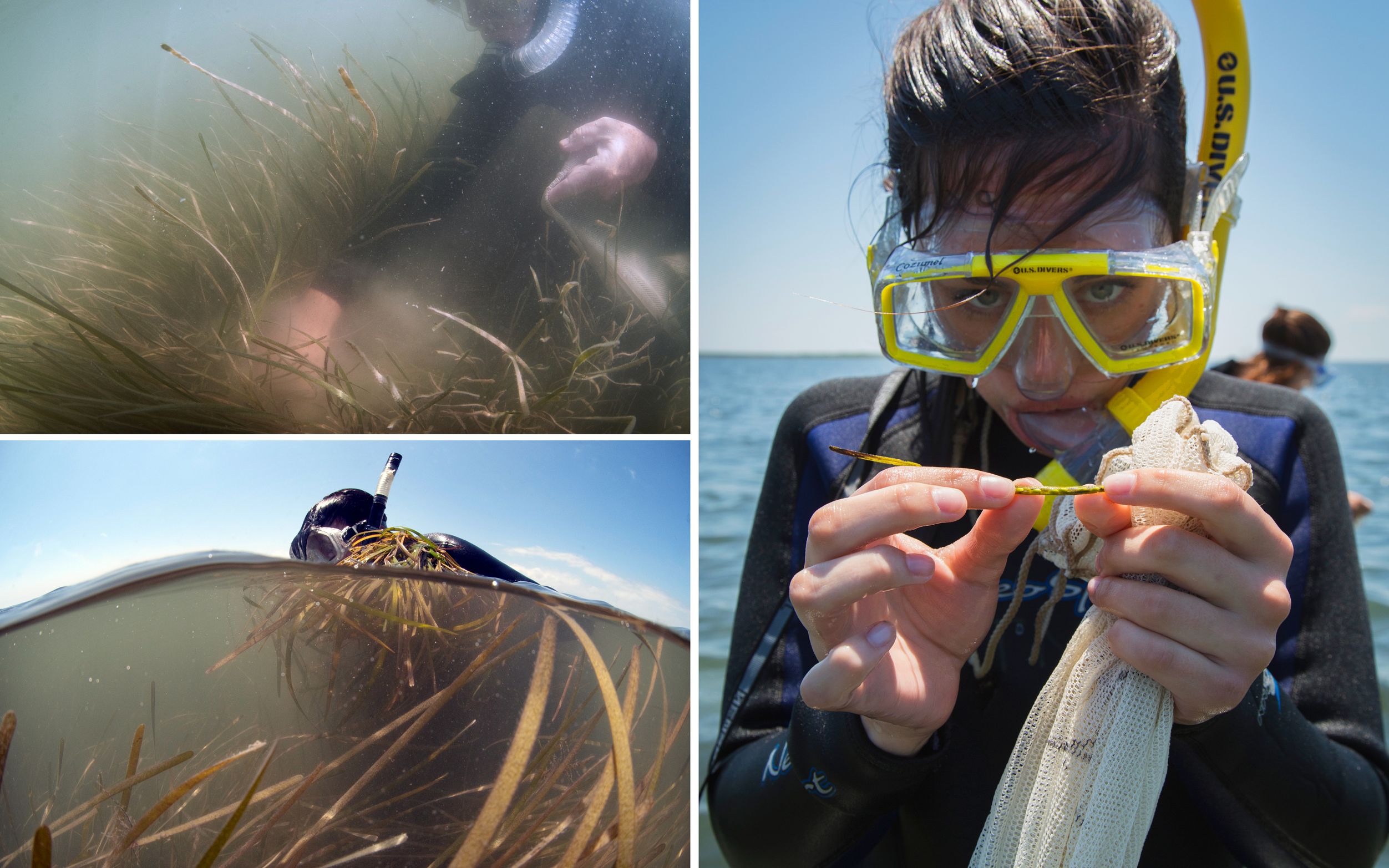
“With VIMS we’ve restored about 9,000 acres of eelgrass,” reports Lusk. “We’d estimated potential for about 10,000 acres. Looking at things now [from University of Virginia (UVa) models], the potential is certainly more. We’re hoping we can get to 18,000. The Conservancy has protected land around the watershed, so we have good water quality; and we can get this stuff done here more easily than folks to the north and south of us. This part of Virginia has turned out to be a living laboratory and not just for the U.S. We’ve got people from Australia, Great Britain and Denmark visiting to learn about seagrass restoration.”
This eelgrass recovery has produced a boom in marine life. “One of the most exciting things is that bay scallops are coming back with the eelgrass, their super-critical nursery habitat,” remarks Whitney Hall, the Conservancy’s Digital Marketing Specialist for Maryland, D.C. and Virginia.” In an effort to repopulate the bays VIMs, partnering with the Conservancy, is raising bay scallops and placing them in protective bags in South Bay.
Dr. Karen McGlathery, who leads UVA’s 20-year eelgrass-recovery study, offers this: “When I came here those coastal bays were devoid of seagrass. Now I can jump out of the boat and swim as far as I can over lush meadows. The water is clear, and wildlife abounds. What’s so exciting is the surprise. We never dreamed it would be this successful. This is the largest seagrass recovery in the world.”
Tampa Bay: More Seagrass, Better Water Quality
Also proving that major seagrass recovery is possible has been the effort in Florida’s Tampa Bay.
From the 1950s through the 1980s there was a major increase in nutrient loading from sewage, fertilizers, stormwater, dredging and wetland destruction.
In the 19th century seagrass prairies covered an estimated 75,000 acres. By the 1980s, only 21,500 acres remained.
Shading out seagrass were vile-smelling algae mats that carpeted the surface and piled up on shore. Shrimp, oysters, bay scallops, birds and fish crashed.
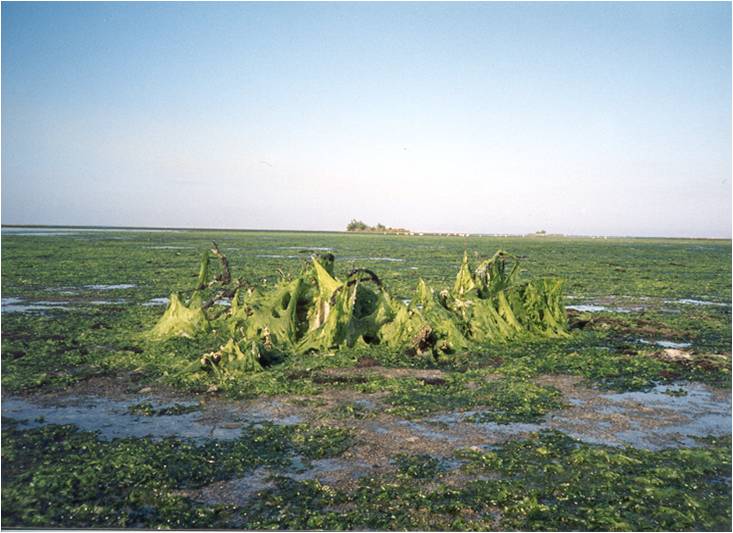
In 1982 wastewater-treatment-plant upgrades dramatically reduced nutrient pollution. But the watershed’s human population was exploding. In 1950, before the seagrass die-off, the population was about 400,000. Today it’s 3 million.
More had to be done, and it was. The Tampa Bay Estuary Program, a partnership of local, state and federal governments charged with improving and protecting the bay, was founded in 1991 — a year after Congress designated Tampa Bay an “estuary of national significance.”
Even with the population boom, the program has steadily reduced nutrient pollution. In 1995 it set a seagrass restoration goal of 38,000 acres. Today there are 41,655 acres.
“Water quality is better than it has been in a very long time,” declares the Program’s Executive Director, Ed Sherwood. “Until this year’s red-tide blooms there had been vast improvements to the ecosystem and resurgence of key fisheries. These blooms are a reminder that we need to continue investing in projects to reduce nutrients from all sources.”
Apex Predators Sustain Seagrasses
Not only do seagrasses sustain apex predators, but apex predators sustain seagrasses.
Everything in the literature told marine botanist Dr. Brent Hughes of Sonoma (California) State University, that seagrass could not survive in Elkhorn Slough, 100 miles south of San Francisco.
The slough gets blasted with fertilizer in year-long irrigation runoff from the heavily farmed Salinas Valley. Few, if any, of the world’s estuaries are as grossly polluted with nutrients. Algae should have been shading out all seagrass, but it wasn’t. In fact, seagrass was thriving and expanding. Hughes was mystified.
“I looked at lots of environmental drivers,” he says. “Storm events caused by El Niño, changes in Pacific Decadal Oscillations that can also bring in warm waters… Nothing explained it.”
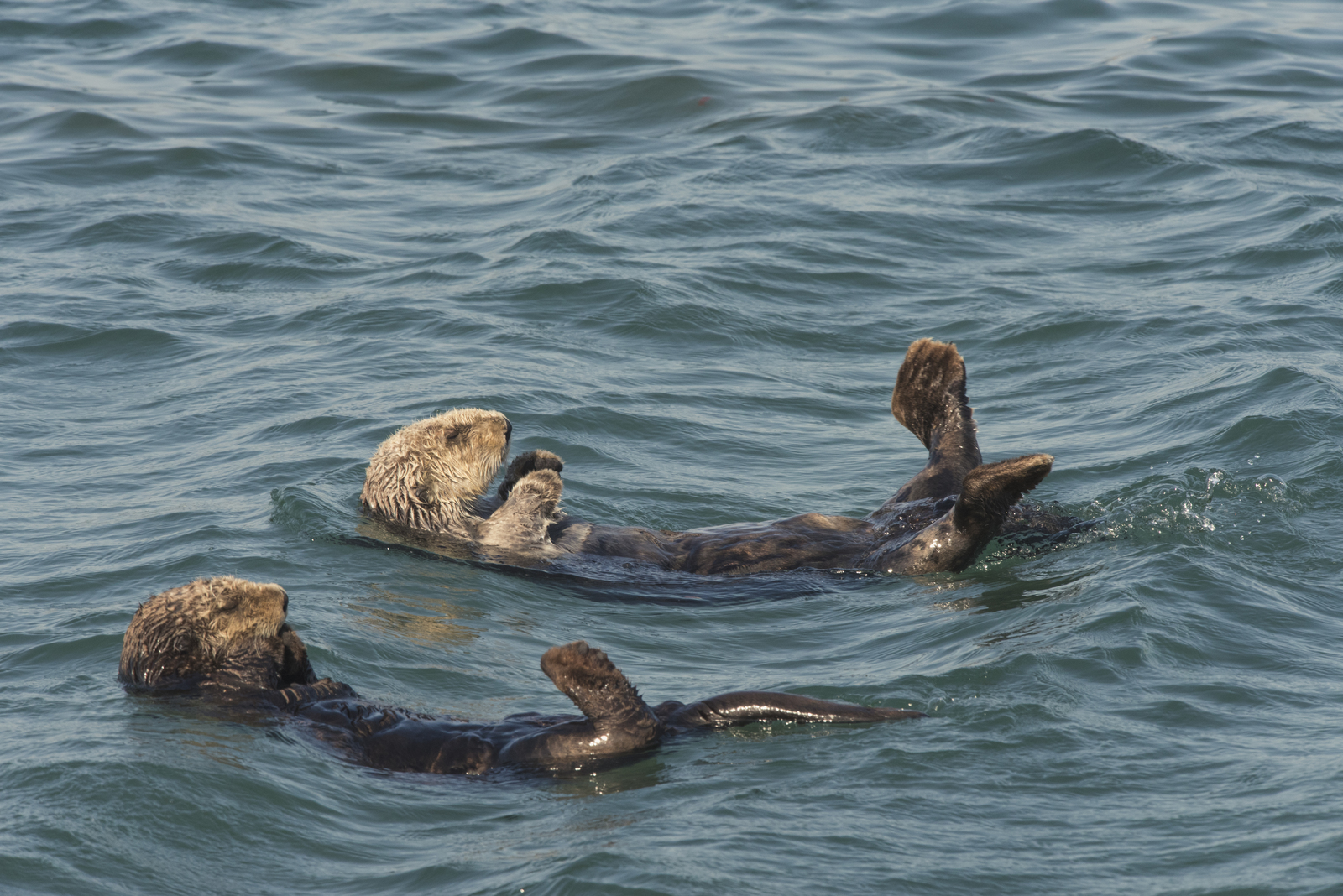
Then Captain Yohn Gideon, who ran a tour-boat business on Elkhorn Slough, gave Hughes a data set of sea-otter sightings. For 15 years Gideon had distributed click-counters to his passengers, instructing them to click each time they saw a sea otter. When Hughes plotted that data set against seagrass recovery it fit like the final piece of a jigsaw puzzle. USGS data provided confirmation.
Isopods and gastropods, which perform a vital service in seagrass ecosystems by grazing away algae, had exploded in Elkhorn Slough. But sea otters don’t interact with them. There didn’t appear to be a connection.
What Hughes eventually found, however, was that when sea otters move into an area they gorge on crabs, virtually wiping them out. Because sea otters lack blubber, they must consume a quarter of their weight in food daily. A single animal can consume 10,000 crabs a year. Crabs are major predators of algae grazers.
Hughes and his PhD student, Kat Beheshti, are transplanting seagrass in parts of Elkhorn Slough barren of seagrass but where sea otters occur. “We’re getting massive seagrass expansion,” Hughes says. “Now our planted plots show up on Google Earth — from space.”
Tiger Sharks Shape the Bay
Apex predators are saving seagrass in Australia, too.
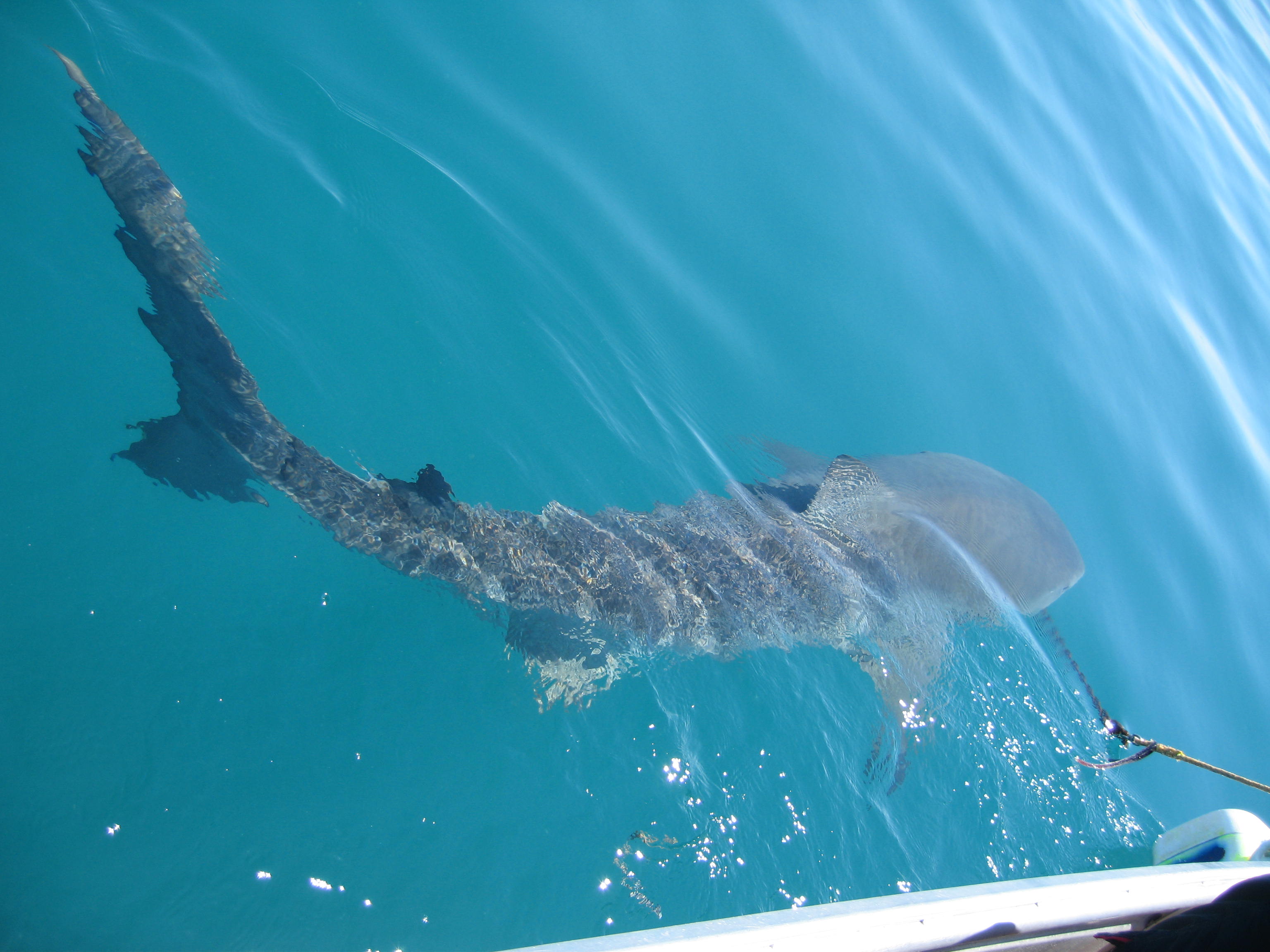
Dr. Michael Heithaus of Florida International University and his students have spent two decades trying to learn the role big predators play in seagrass ecosystems. Their lab has been 1,853-square-mile Shark Bay, a World Heritage Site off Western Australia that supports Earth’s largest seagrass prairies. It’s essentially untouched by humans, unless you count global warming.
In 2010 an unprecedented heat wave and silting from the flooding Wooramel River killed an estimated 22 percent of the bay’s seagrasses.
“We wondered what would happen if sharks were lost and seagrass also took a hit,” says Heithaus. “So my PhD student at the time, Rob Nowicki, did a series of experiments that simulated damage by seagrass grazers (green sea turtles and sea cows) and loss of tiger sharks. We found that tiger sharks are critical for structuring the bay because they scare grazers away from shallows.
“Tiger sharks function like wolves are thought to function in Yellowstone, protecting large areas of seagrass from being overgrazed. Amphibolis antarctica, the bay’s main seagrass species, is more like a sea bush than a seagrass. It provides dense habitat for all sorts of species; but it’s not very nutritious, so grazers don’t eat much of it. Several fast-growing, more tropical species that grazers like came back faster. Amphibolis is doing well only in dangerous areas [patrolled by tiger sharks].”
Heithaus points out that this research provides more justification for shark conservation. “If you lose tiger sharks,” he says, “those weedy seagrasses will get in there. Then the grazers dig it all up, and the system gets stuck in mowed-lawn mode rather than big, habitat-forming Amphibolis beds.”
The role of sea otters, tiger sharks and humans in seagrass recovery suggests the following edit of John Muir’s famous quote: “When we restore anything by itself, we find it hitched to everything else in the Universe.”
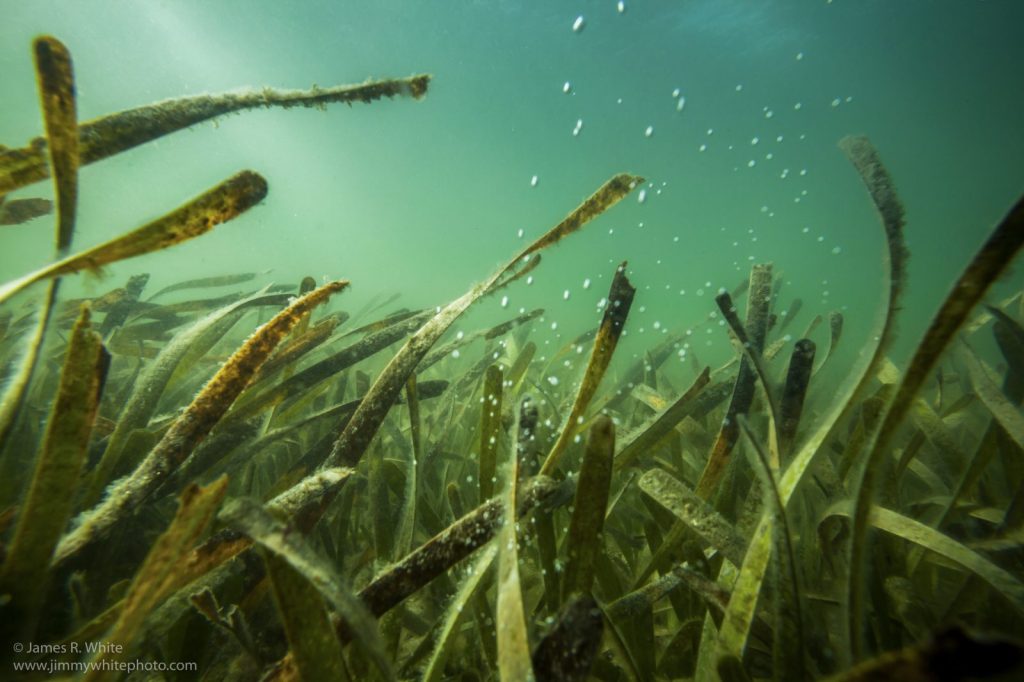



Thankyou for the very informative article.
Here in Australia, Victoria, East Gippsland, our estuaries have suffered terrible losses of seagrass habitat.
Our management responses have largely consisted of mapping and recording the loss.
Your article sheds light the deeper relationships that affect seagrass recovery.
Thankyou very much again.
I first heard of this planting a forest under the sea on 60 minutes….the Sunday night TV show. Since then a dear friend of mine planted eel grasses in the Montauk Point area…. It was a real joy to me first of all to hear of this reality happening and to have you confirm it……………..it gives me great HOPE for the planet.
Thank you for doing what you do………….
I should note (and would have in the text had I had space) that the seagrass-recovery partnership between The Nature Conservancy and the Virginia Institute of Marine Science (VIMS) would never have happened if Barry Truitt — The Nature Conservancy’s Chief Conservation Scientist at the time — had not stepped up to the plate and worked with his friend Dr. Robert Orth of VIMS. Advocates of marine ecosystems owe both men a debt of gratitude.
Thank you for an educational wonderful inspiring story. And more thanks to all the people who did the work that made the inspiring story possible.
And special thanks to the people who are helping the Chesapeake Bay turn into a significant seagrass success story, partly via water quality policies that have actual teeth. Someday the residents of the Mississippi River watershed will finally get fed up with filthy water and will overthrow the political tyranny of Big Ag. The Bay, with its increasing beautiful expanses of seagrass, is showing that it can be done.